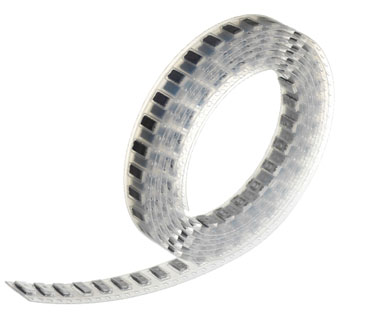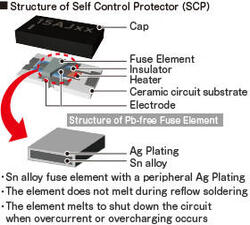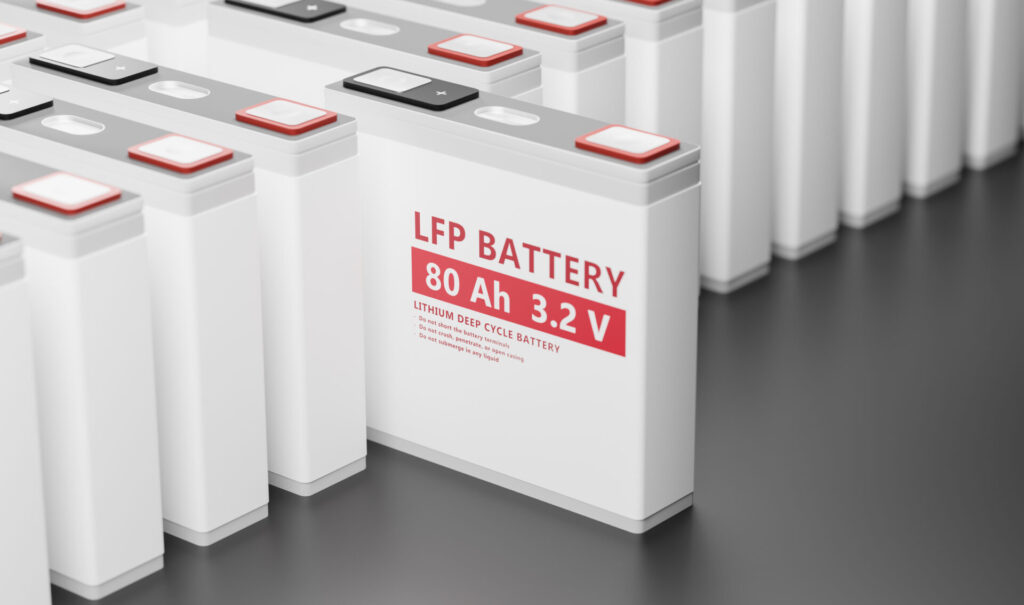
- Electronic Components
New Dexerials’ secondary protection element properties: Lead-free and environmentally friendly
目次
SCPs that use fuse elements with high melting point solder
SCPs (Self Control Protectors) are secondary protection fuses that melt fuse elements and interrupt circuits. They are used when the primary protection that controls the charging and discharging of lithium-ion batteries is not functioning properly, resulting in an overcurrent or overvoltage. Since its launch in 1994, Dexerials’ SCPs have been widely used in devices that use lithium-ion batteries, such as laptops, smartphones, power tools, and electric motorcycles.
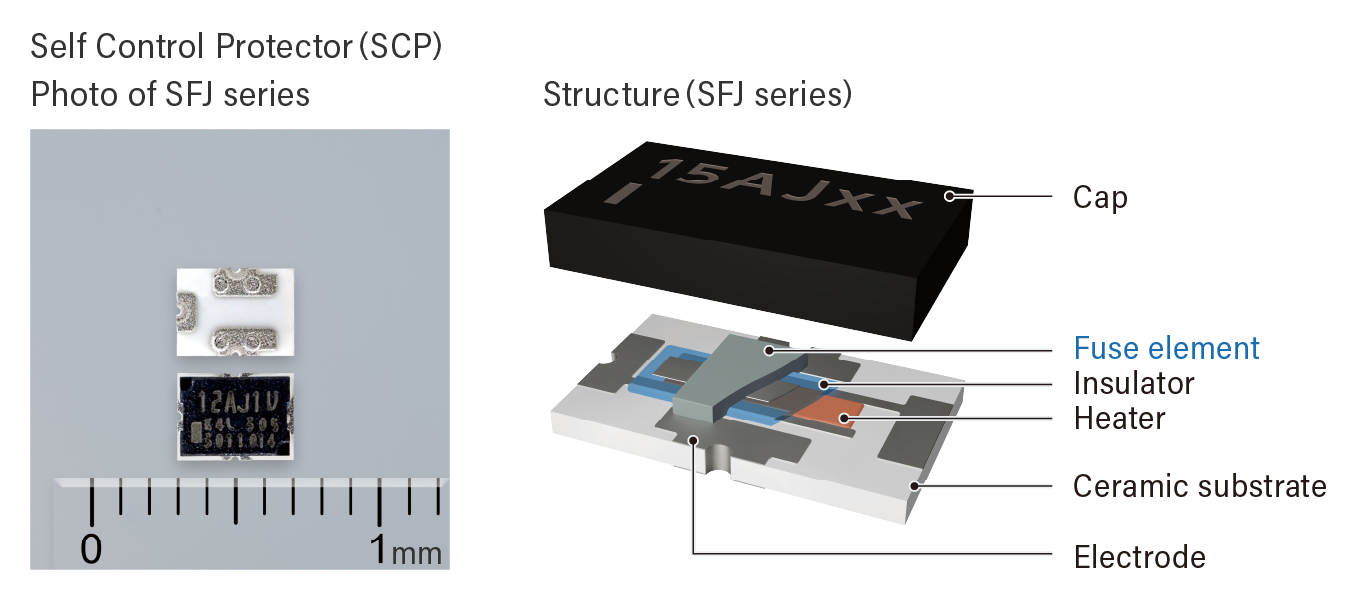
With the exception of a few products, most SCPs are attached directly to a printed circuit board by reflow soldering. The materials used in SCPs must withstand the heat of the reflow process and the internal fuse element must not melt even when heated to 230-260°C. However, the fuse element should have a melting point just above the limit to withstand the heat (260°C) at the time of component mounting, since the fuse element must melt quickly when it detects overcharging. As a material that satisfies these two requirements, SCPs use a high melting point solder as the main component of the fuse element.
Lead is difficult to replace in high melting point solder due to its excellent performance characteristics. Lead is exempt from the regulations listed in the RoHS Directive, which restricts the use of certain hazardous substances in Europe. However, considering the current trends, it is necessary to create lead-free products.
‘Lead-Free’ Becomes a Global Industry Trend
Lead-based fuse elements present two major issues.
Lead is abundant and melts at a lower temperature than other metals, making it inexpensive and easy to process. As a result, it has been used industrially in various ways since ancient times. However, lead is also known to be toxic and can pose a health risk if it accumulates in the human body through food or water. In recent years, many companies have been working to reduce the use of lead, with the goal of becoming lead-free to prevent pollution of the soil, rivers, and oceans.
The RoHS Directive, high-melting-point solder with a lead content of 85% or more by weight and glass/ceramic/lead composite materials used in electrical and electronic components. Therefore, SCPs have not been regulated to date.
However, regulations on the use of lead are expected to become more stringent in the future, and companies will undoubtedly focus on sourcing more environmentally friendly parts and materials. In response to this trend, Dexerials decided to develop lead-free fuse elements.
High melting point solder: An obstacle for SCPs to handle high currents
In addition to their negative impact on the environment, lead-based fuse elements present another major challenge. Lead is a high resistivity metal, which means it does not conduct electricity well. The higher the resistivity of a metal, the more heat it generates when current flows through it. Fuses function by melting due to the heat (Joules) generated when electricity flows through them. In other words, lead fuses tend to generate heat, which makes them more likely to blow when a large current is applied.
Lithium-ion batteries used in electric motorcycles and other vehicles require fuse elements that can handle such high currents. If a fuse could be made of materials with lower resistivity than lead, it would be possible to have either a smaller fuse that can handle the same current as before or a standard-sized fuse that can handle larger currents. In other words, it would enable SCPs to handle larger currents while reducing their size.
Technical innovation that combines tin alloy and silver plating
In order to develop a fuse element that is both “lead-free” and has “low resistivity”, Dexerials has developed a method in which the base material of the fuse element is made of a tin alloy that has a melting point of 217°C. Tin alloy is then plated and coated with silver, which has a melting point of 962°C.
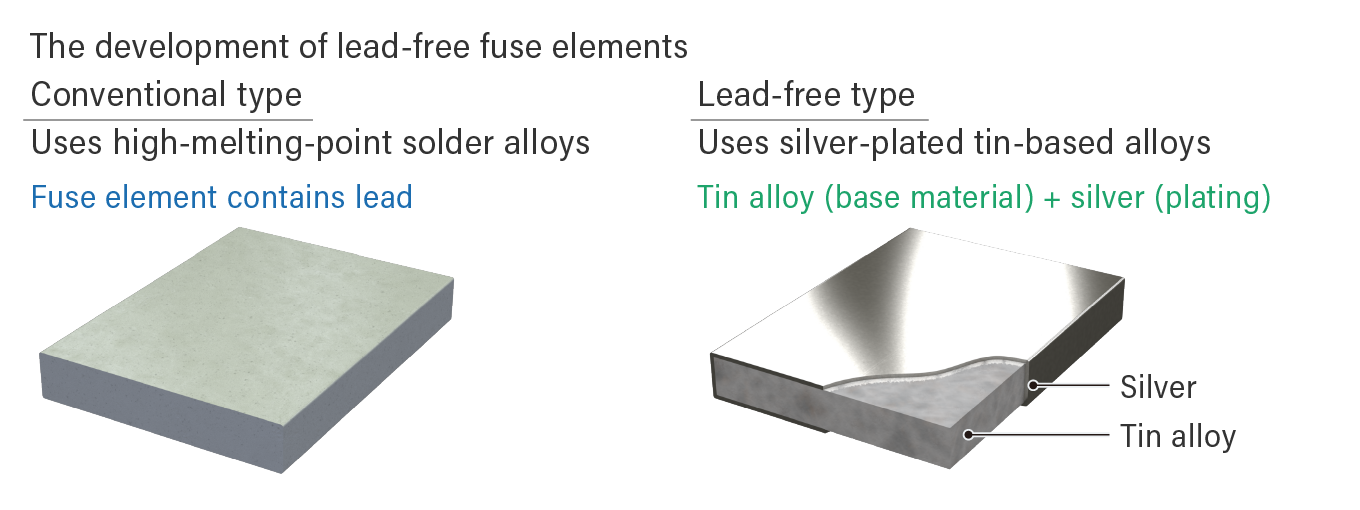
In fuse elements made by this method, the base metal tin alloy melts during the reflow soldering process, but the high-melting-point silver plated on the element acts as a container to maintain the shape of the element. However, when the element is heated above ~300°C, a “melting phenomenon” occurs at the interface between the molten tin alloy and the silver plating, where the solid metal melts into the molten metal at a temperature below its own melting point.
By utilizing this method, it is possible to melt fuse elements at a temperature much lower than the melting point of silver (962°C), a major step toward achieving lead-free SCPs.
Low resistivity opens up new possibilities
This newly developed fuse element has both low resistivity and is lead-free. The resistivity of high-melting-point solder alloys containing lead is 21μΩ-cm. The tin that makes up the silver-plated tin alloy has resistivity as low as 11μΩ-cm. Silver is an extremely conductive metal at 1.6μΩ-cm. The combination of tin and silver plating has a resistivity of 7μΩ-cm for the entire fuse element, enabling the same-sized fuse element to handle approximately three times the current of conventional fuses.
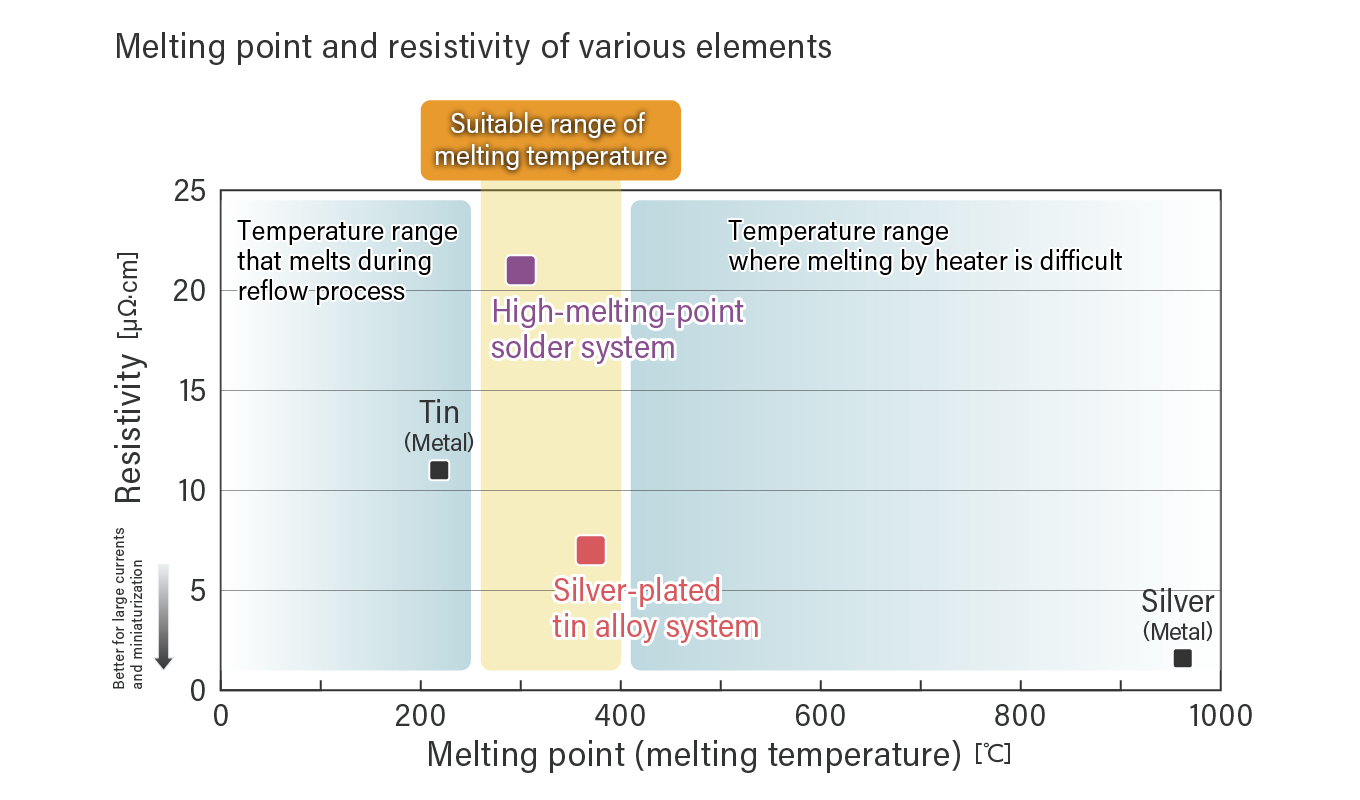
In addition to lead-free fuse elements, Dexerials has developed lead-free SCPs as a whole by reviewing the material composition of ceramic substrates. With these technologies, Dexerials has successfully developed and patented its SCP compatible with devices that require high currents and fast charging, such as smartphones, drones, and power tools.
Dexerials will continue to expand its technologies and knowledge to develop products that reduce the burden on the environment while meeting the needs of its customers.
Related articles
- SHARE

We provide materials regarding our products and manufacturing technologies.
Feel free to download it for free.
Download Materials
We provide materials regarding our products and manufacturing technologies.
Feel free to download it for free.
Download Materials




